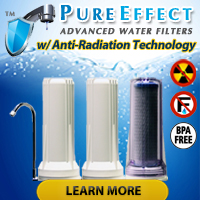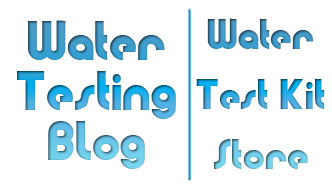Several years ago researchers (we don’t recall from where) announced similar findings. Their research focused more on chloramine gas, a product of the reaction between free chlorine and organic contaminants such as sweat, body oils, etc. Additionally, the previous research also focused more on indoor pools where the chloramine gas could more easily build up as a result of poor ventilation.
The results of this more recent study, which broadened its focus to include children who swam in outdoor pools, indicate that children exposed to chlorinated pool water stand a much greater chance of developing allergies and asthma than children who swam in pools using alternate sanitizers such as silver/copper ionizers, which use far less chlorine.
MONDAY, Sept. 14 (HealthDay News) — Swimming in pools disinfected with chlorine may increase the odds that a child will develop asthma or allergies, new research suggests.
The study found that teenagers who spent more than 1,000 hours swimming in chlorinated pools, either indoors or outdoors, had more than eight times the risk of having asthma than did teens who primarily swam in pools using a copper-silver disinfecting method.
“Chlorinated pool attendance has a very significant impact on the prevalence of allergic diseases in the studied population,” said lead author Alfred Bernard, a professor of toxicology and research director at Catholic University of Louvain in Brussels, Belgium. ( source )
Does this mean all pool owners with chlorinated ought to run out into their backyards, drain their pools, and/or toss in a few pounds of chlorine neutralizer? ABSOLUTELY NOT!
Thus far the evidence indicates that proper usage of chlorine as a pool water disinfectant remains safe. The problems start, it seems, when chlorine levels get ‘too high’ in the water and when chlorine gases build up in the air above and around swimming pools.
“When used properly, [chlorine] is an efficient and safe disinfectant for swimming pools. However, when too much chlorine is added to water or builds up in the air of indoor pools, there is unavoidably some irritation of the organs of the bather in contact with the water and air,” he explained. “There is now increasing evidence that these irritating effects may be detrimental to the airways of regular swimmers, especially the children who are the most vulnerable and the most frequent attendees of chlorinated pools.” ( source )
So what can the average pool owner do to minimize the risks presented by their chlorinated pool? Simple: Test chlorine levels, and other vital water parameters, often and make sure not to use more chlorine than necessary to keep the water properly disinfected.
Bernard said that if you have a backyard pool, you should use as little chlorine as you can to safely disinfect the pool. He said that many people over chlorinate their pools to get clear blue water. But, he said, “chlorine is a disinfectant, not a cleaning agent.” ( source )
Indoor pool owners need to follow the preceding advice AND make sure their pool enclosure area has proper ventilation. Water in indoor pools typically has a higher temperature and thus tends to evaporate and also give off chlorine gas at a faster rate than cooler water.
“How can I test the chlorine level in my swimming pool?”
Swimming pool test kits come in three basic forms, for the most part: Liquid Test Kits, Test Strips, and Pool Testing Meters.
After reading this article you may find yourself thinking, “I will switch to a copper-silver ionizer and say ‘goodbye’ to chlorine forever!” Sorry, but that last part will most likely not happen.
Many copper-silver ionizer pool water systems suggest maintaining low residual levels of free chlorine in pool water. Often times the suggested free chlorine levels will fall below the detection level of most test strips, liquid test kits and even some meters.
To monitor such low levels of free chlorine in pool water we suggest the Pool Check Low Chlorine 3-in-1 Test Strip which can detect free chlorine levels as low as 0.05 ppm.







